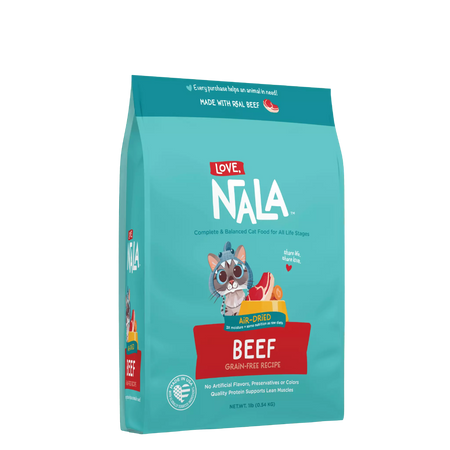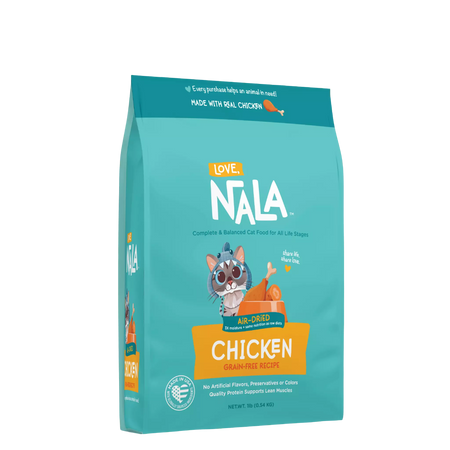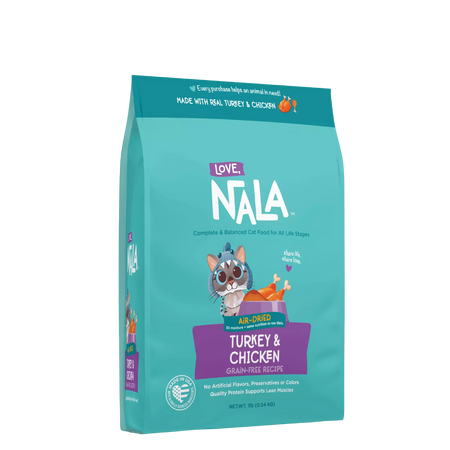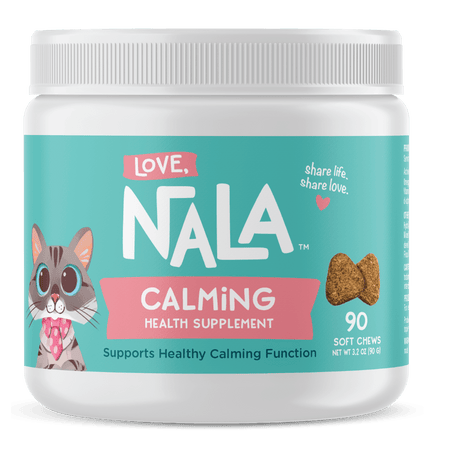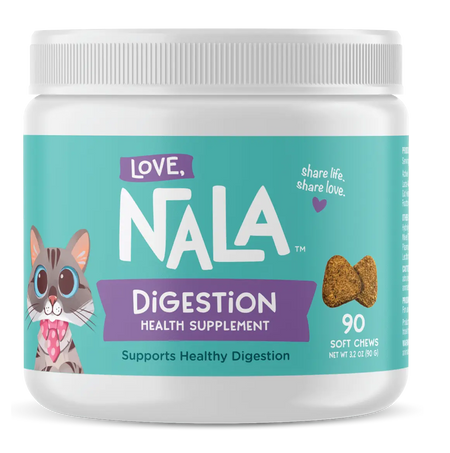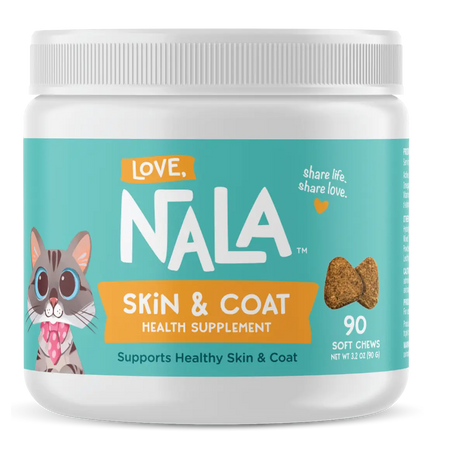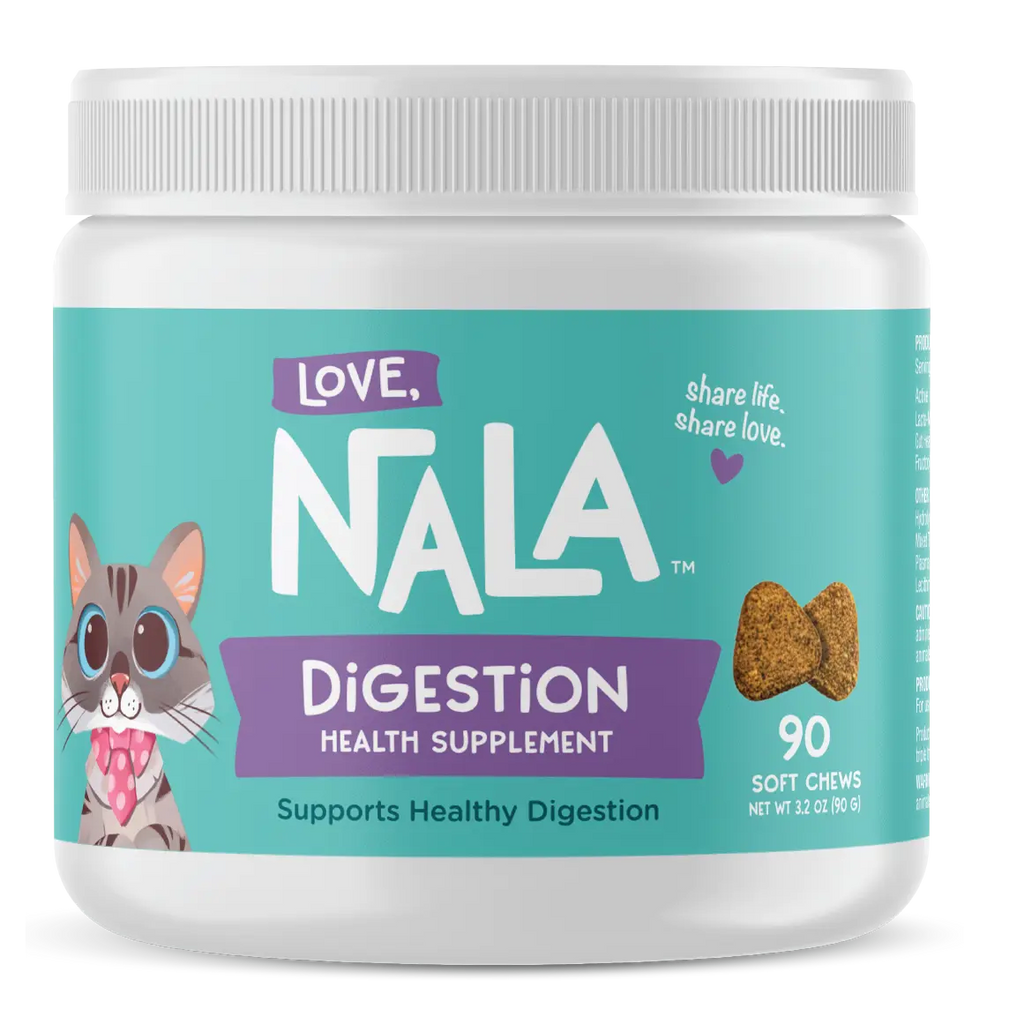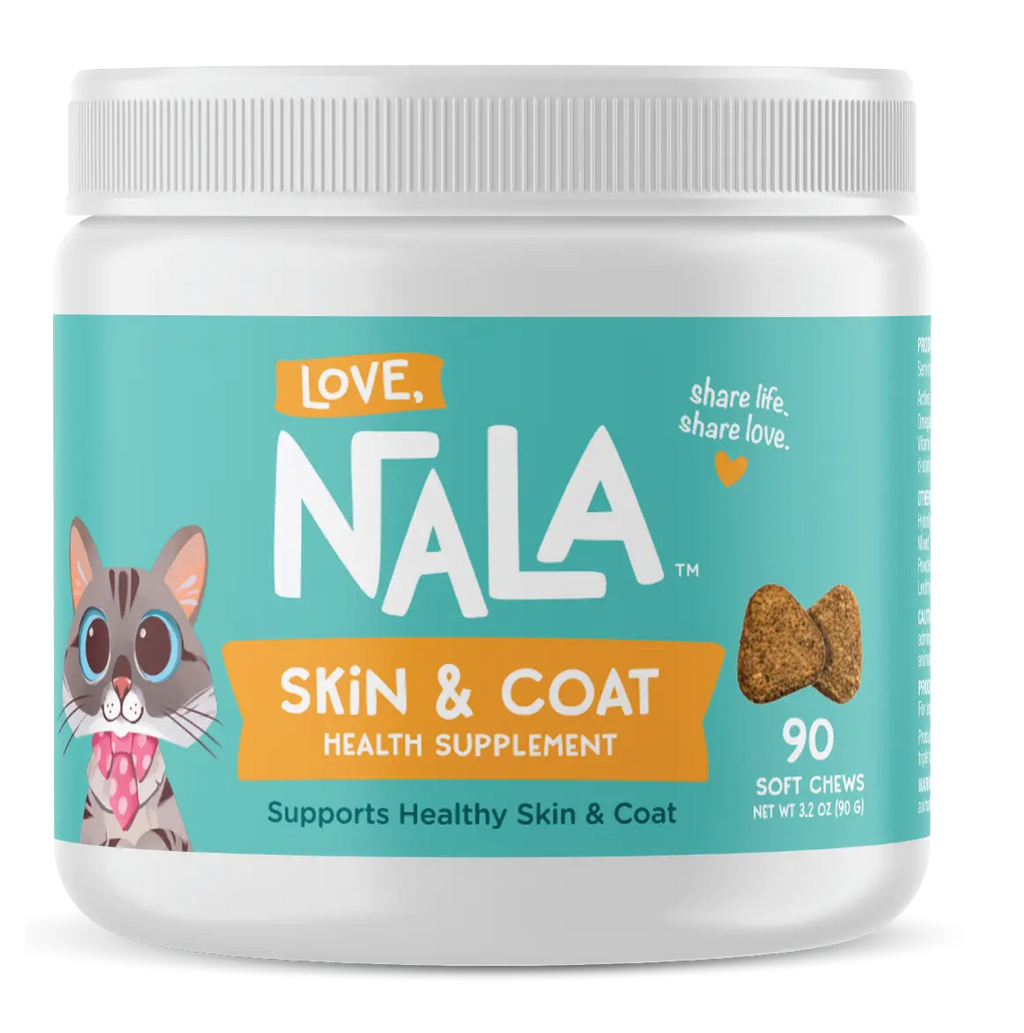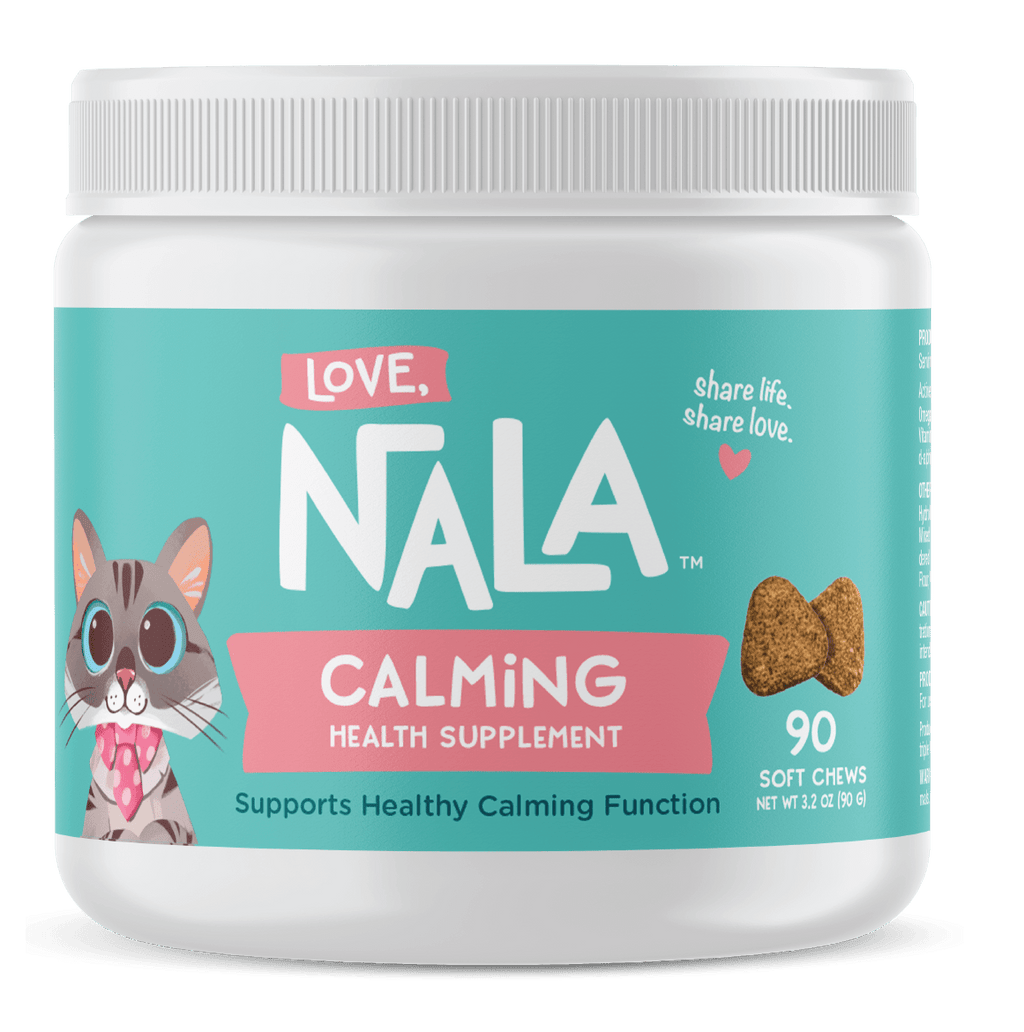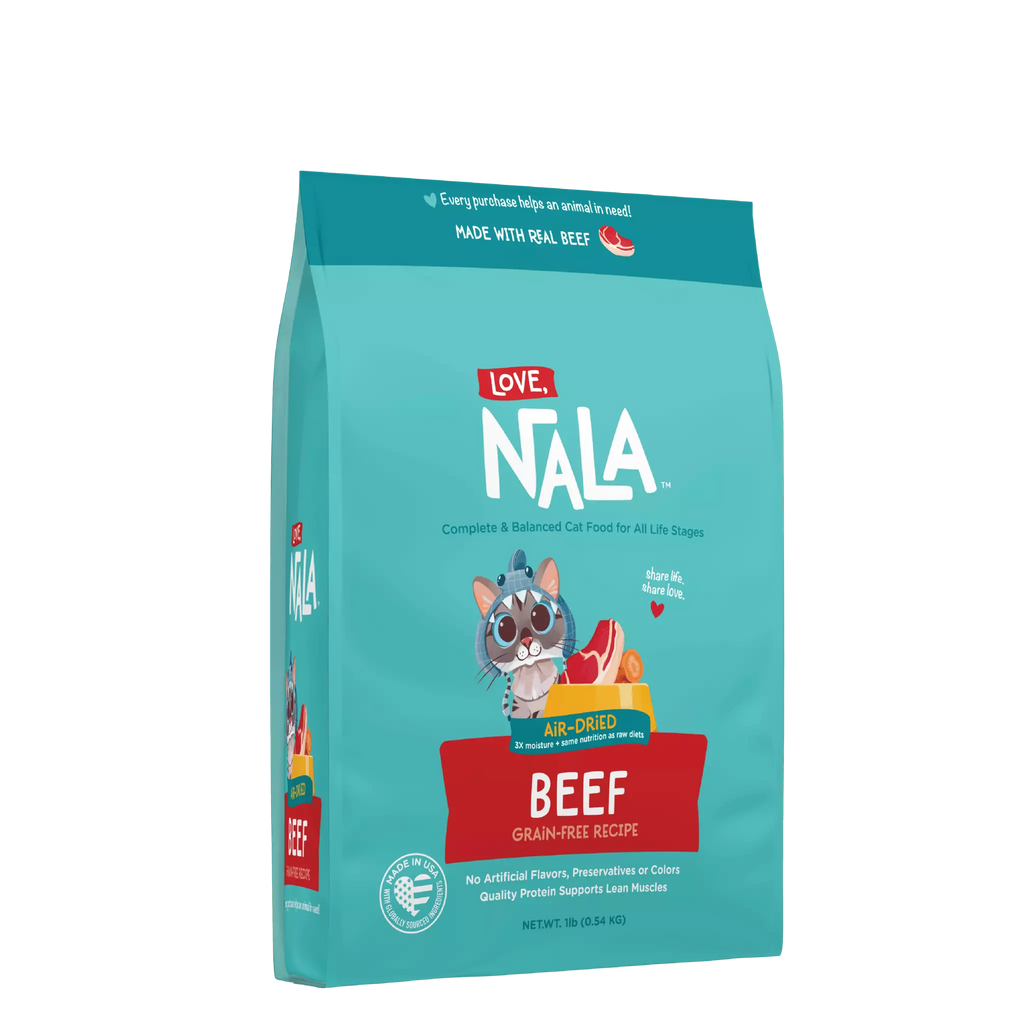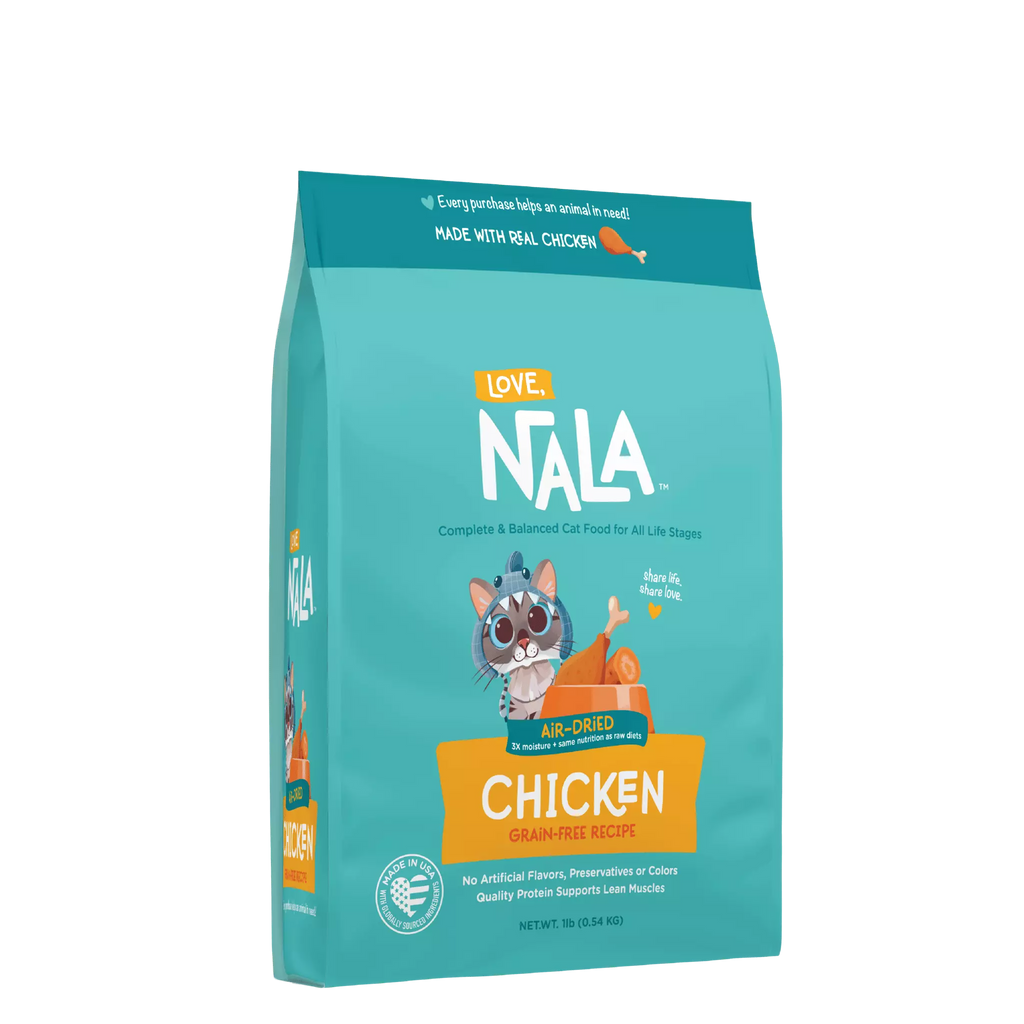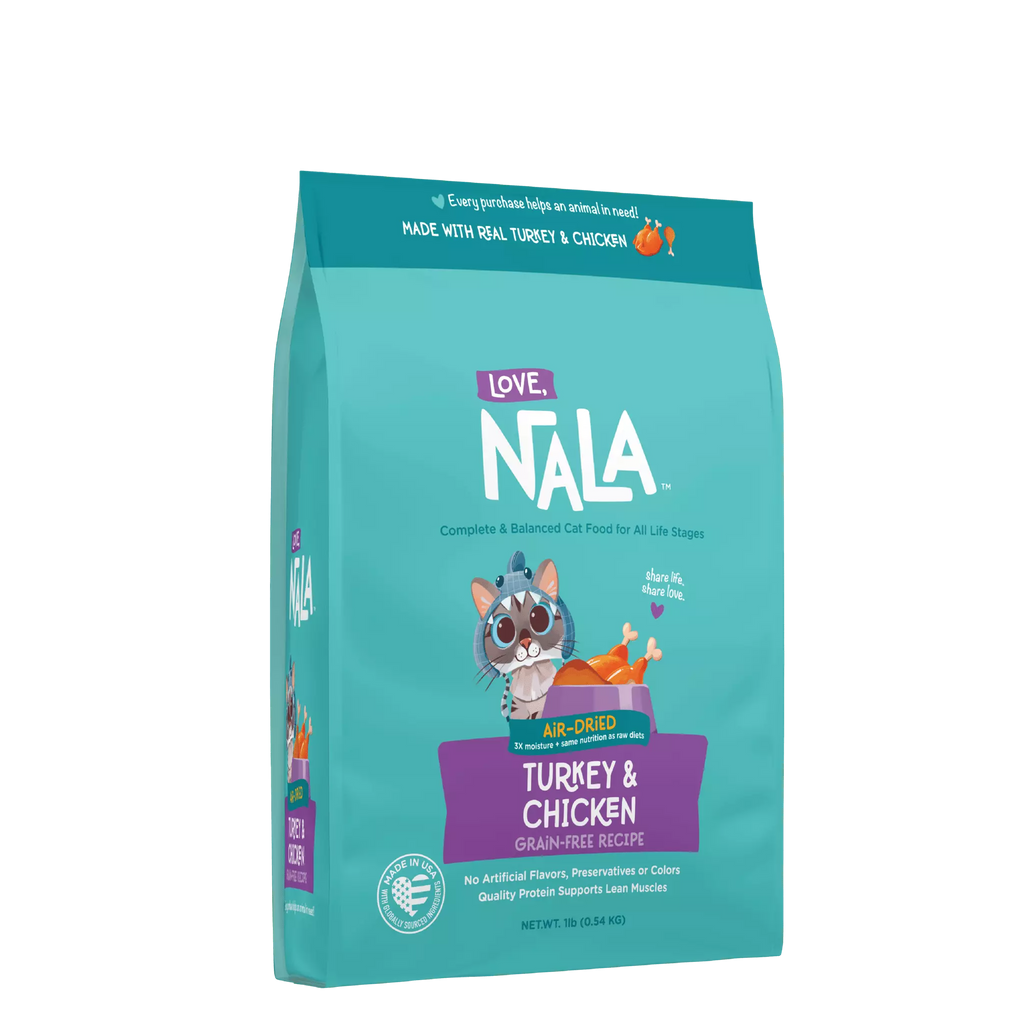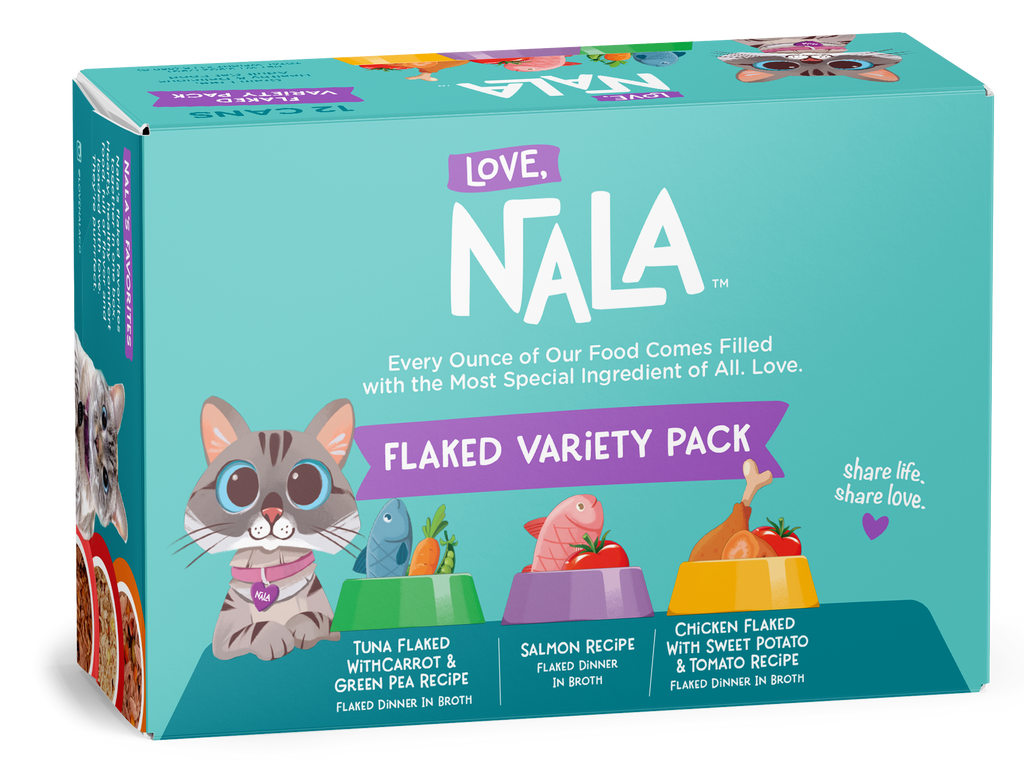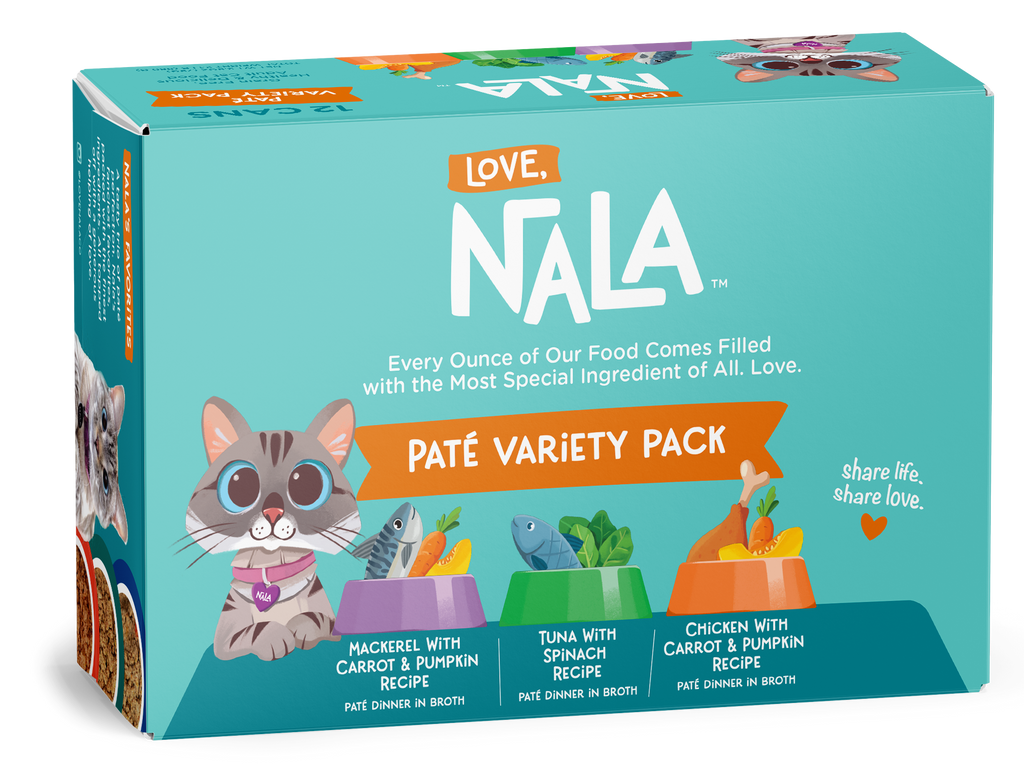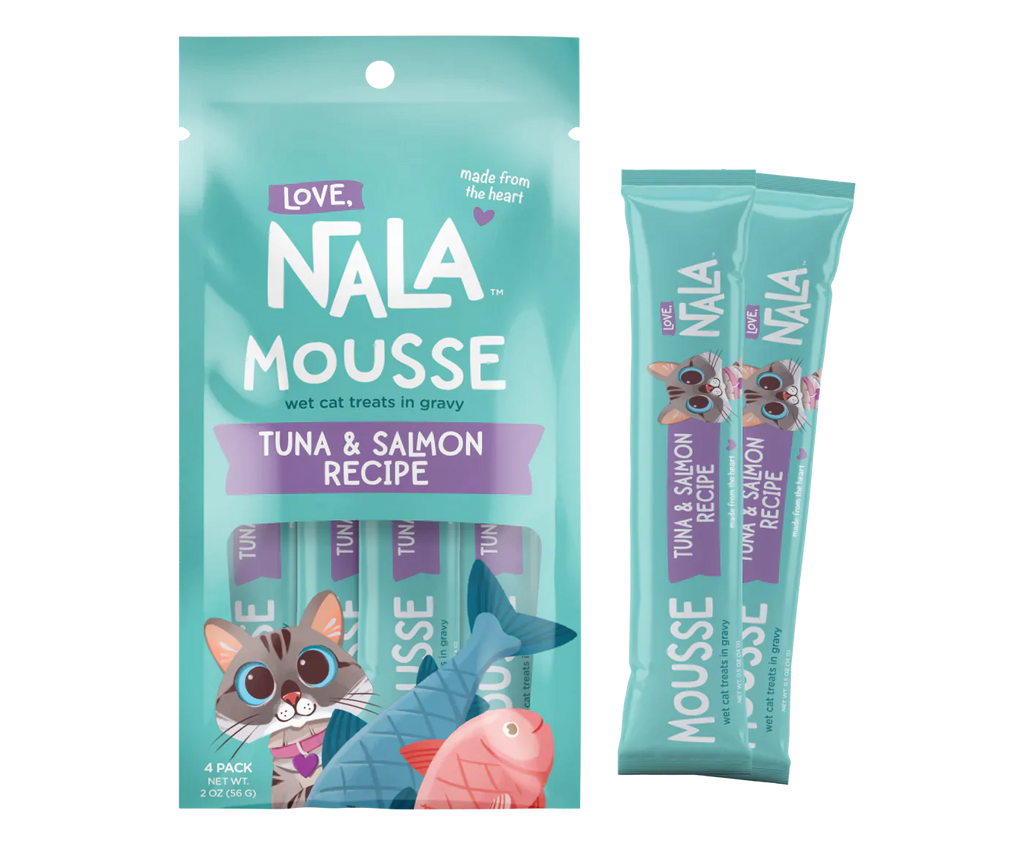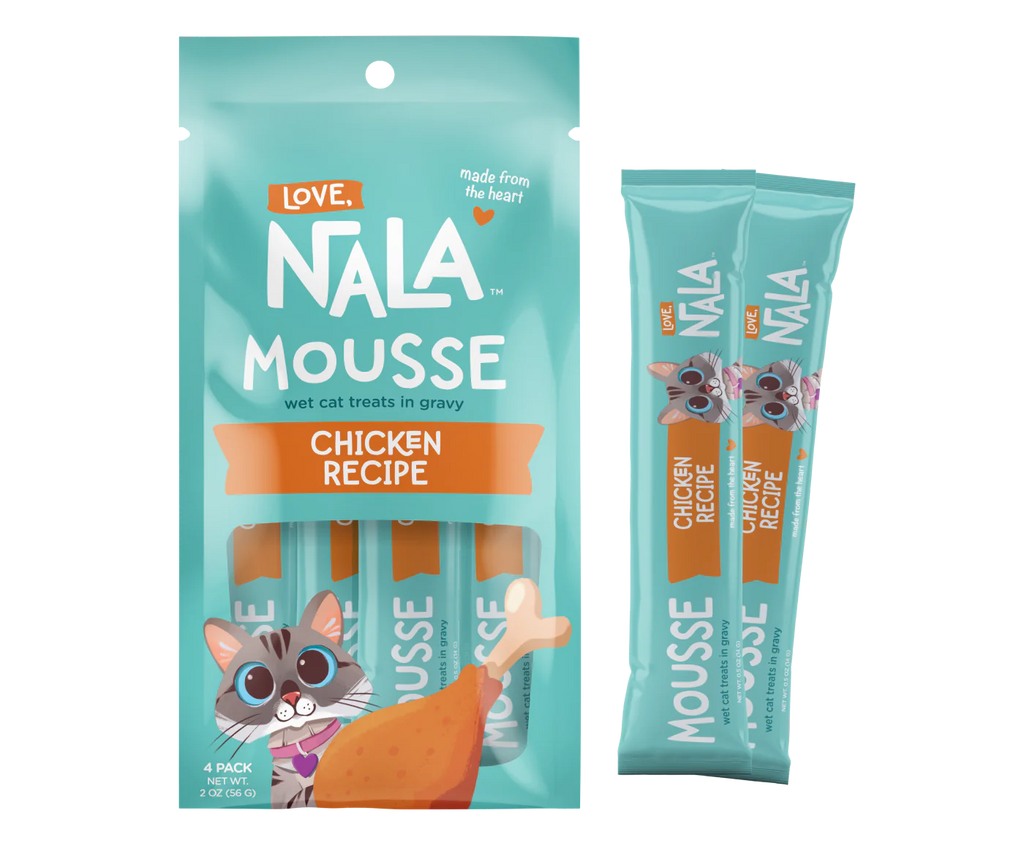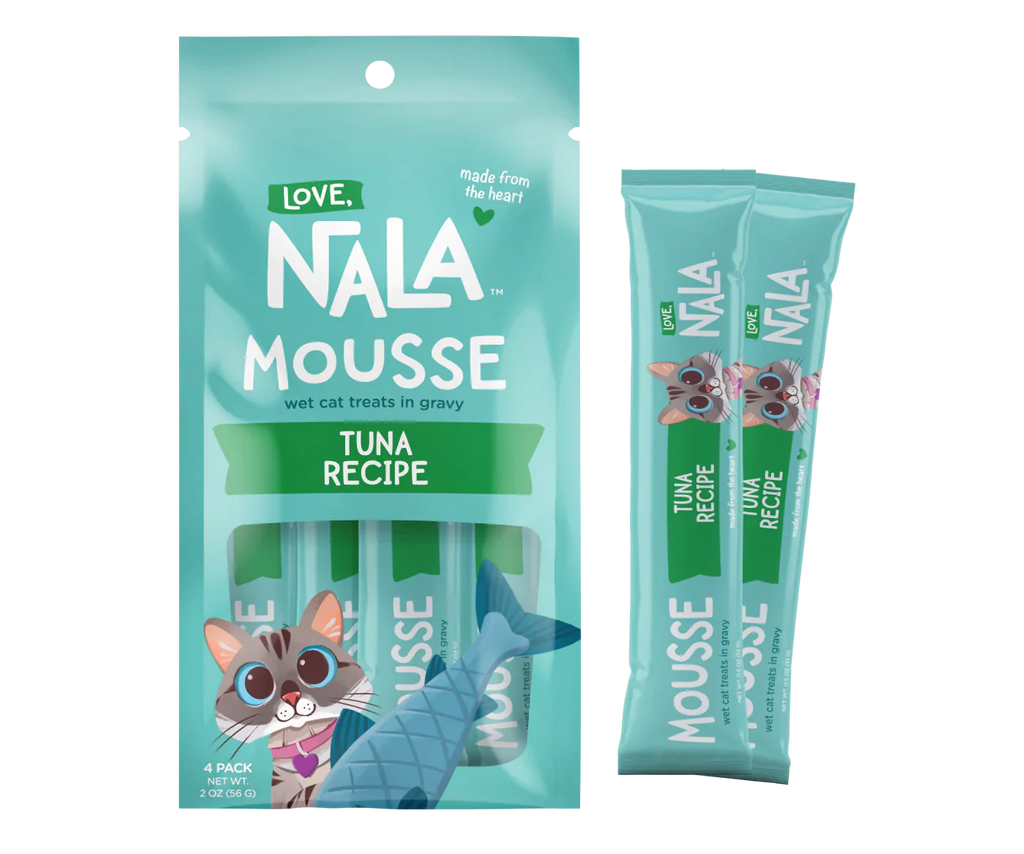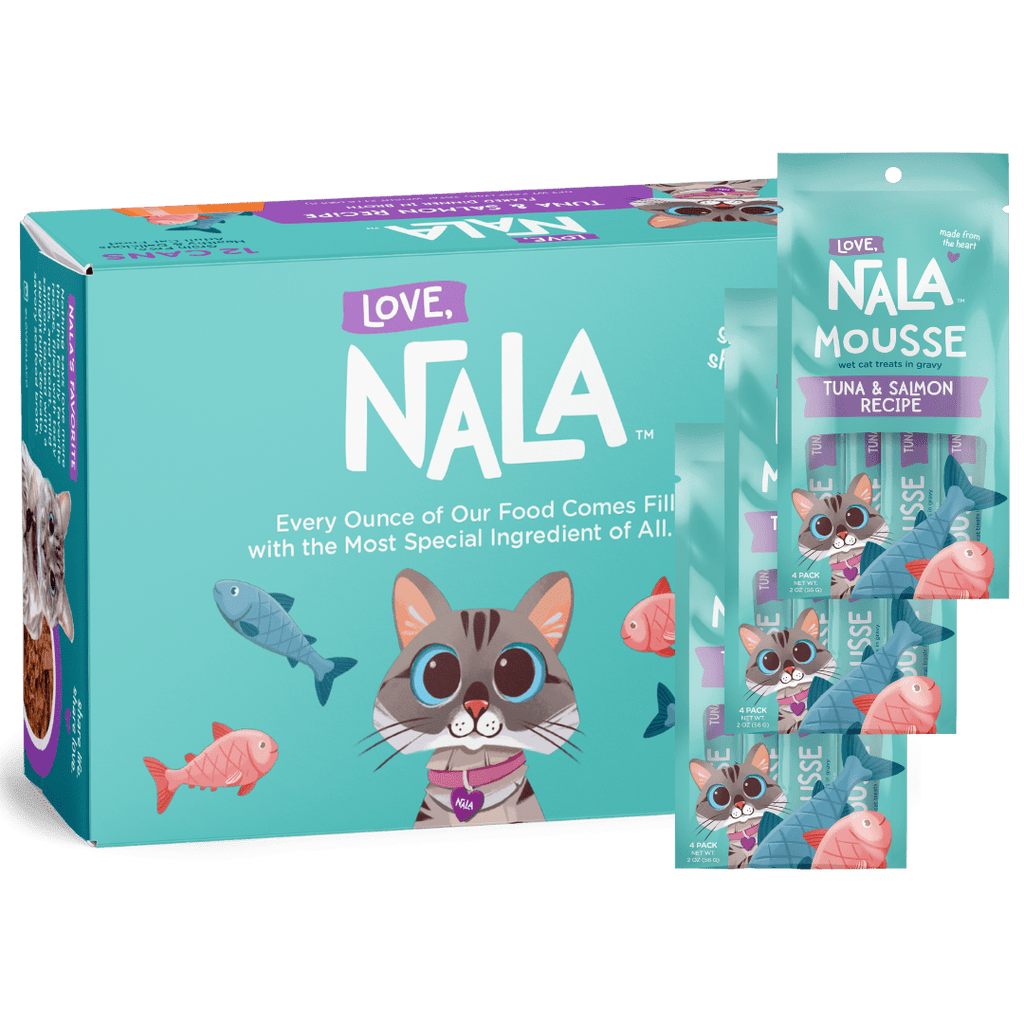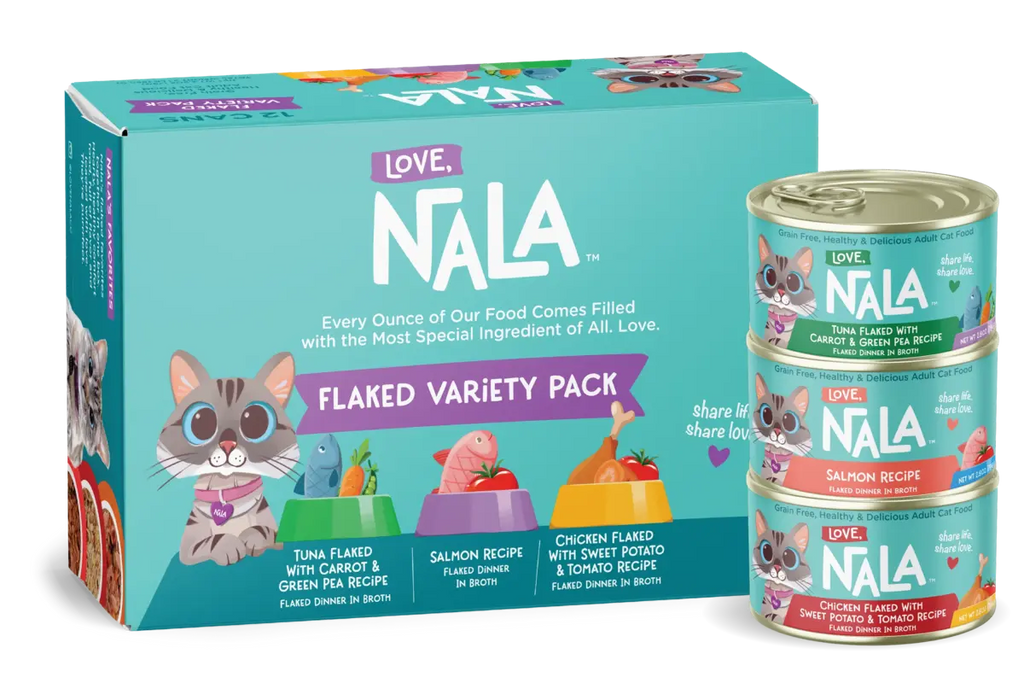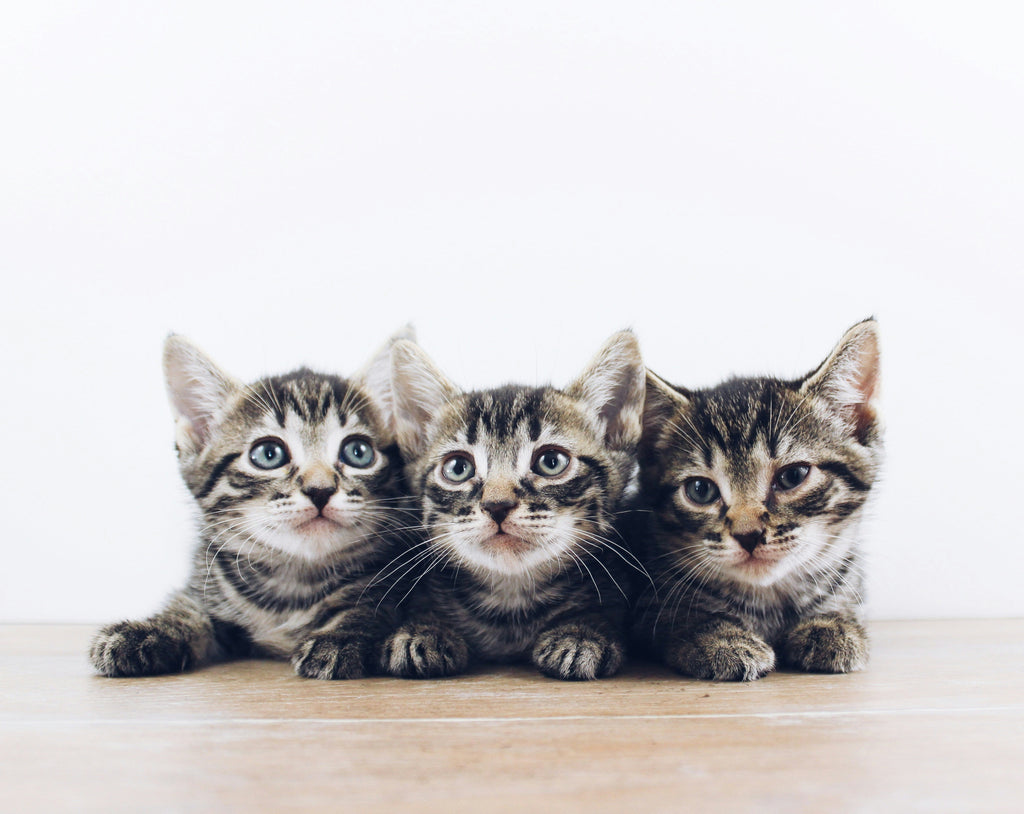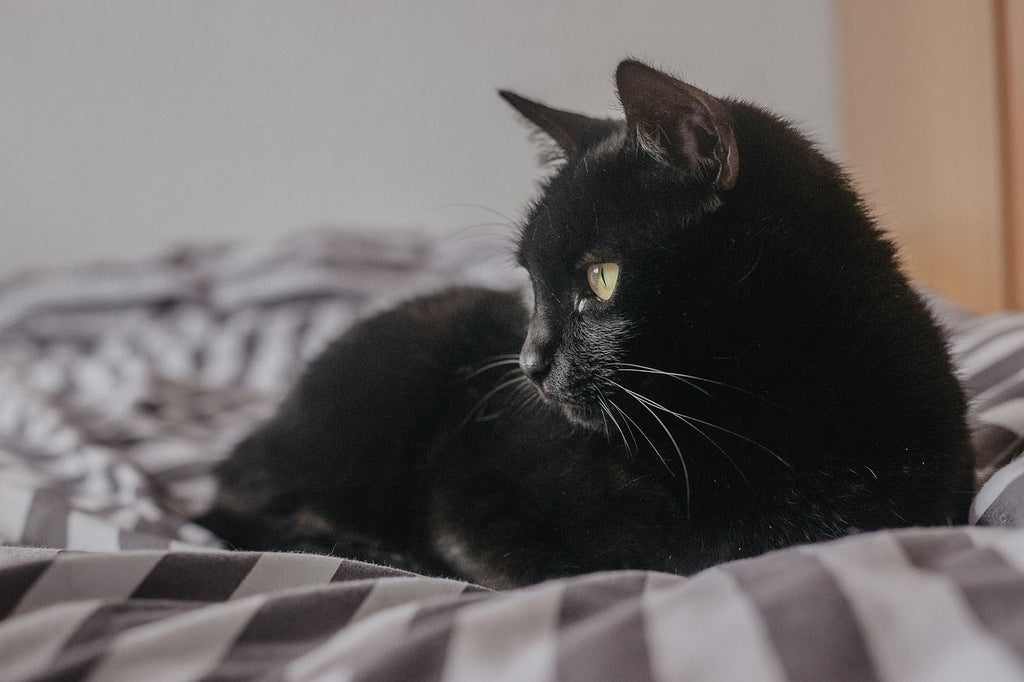Cats love their wet food. There are many forms and textures available to tempt even the most finicky eater. Two of the most popular categories of wet cat food are paté and flaked cat foods. They offer exciting textures that mimic what they’d eat in the wild, and are a great complement to dry food.
Discovering which form of wet cat food your kitty will most love doesn’t have to be trial and error. Love, Nala offers some insights.
What Is Pate Cat Food?

Pate´ is just what you’d expect: it’s smooth, with a loaf-like consistency. Its base is usually made of meat, fish, or chicken, with organ meats and broth folded in. Depending on the brand, it may also include vegetables, grains, and other nutritious ingredients.
Pate´ wet cat food has an average moisture content of 75 to 78 percent, although some brands go as high as 80 percent.
There are many brands on the market, ranging from Fancy Feast and Purina PRO Plan; higher-quality brands of pate´cat food include Hill’s Science Diet and Love, Nala.
What Is Flaked Cat Food?

Flaked cat food consists of small, thin strips of meat, poultry, or fish that appear to have been pulled from the bone. This type of cat food has a texture close to what cats eat in the wild. It’s served in a tasty broth or gravy, making the moisture content between 70 and 80 percent.
Many brands, from Blue Buffalo to Love, Nala, offer flaked cat food in flavors from meat to fish.
Pate vs Flaked Cat Food: Key Differences
Both types of wet food offer moisture and textures that appeal to picky cats, those that are older, or may have dental issues.
The soft texture of pate´ may be easier on sensitive teeth or gums. It can also be easier to digest if kitty is having tummy troubles.
The small, soft strips of flaked food mimic textures that appeal to cats that may prefer something that “feels” closer to natural.
Both types of wet food provide exceptional moisture; hydration is essential to keep cats healthy, especially as they age. They’re both easy to feed and create little mess.
Texture and Consistency
Pate´ has a smooth, dense texture. The softness makes it easy to chew, making it ideal for cats who may have sensitive teeth or tummies. Flaked cat food has a thin, shredded texture
Moisture Content and Hydration
Because pate´ is more compact, the moisture content tends to be about 75%; flaked food contains more broth, with a moisture content of 80 percent or more.
Ease of Eating and Chewing
For cats of all ages, pate´ wet cat food tends to be easier to eat, chew, and digest. This is especially important for kittens transitioning to solid food. Cats with sensitive teeth or gums will also find it easier to eat.
Flavor and Palatability
When it comes to wet cat food textures, cats may prefer one form over another. However, both types of this wet food offer exceptional flavor, which appeals to picky eaters.
Feeding Experience and Mess Factor
Pate´ cat food is soft and spreadable; kitty may smear it all over the dish. Flakes come in a delicious broth, and that may cause your cat to lick that up and leave some of the meat behind, which can dry up.
Nutrient Density and Caloric Content
Pate´ is denser than flakes (which include broth) and thus, contains more calories. That can be helpful when trying to keep or put weight on your cat. However, if you’re trying to maintain their healthy weight, be conscious of how much you feed them.
Visual Appeal to Cats and Owners
Both of these wet food textures have their own appeal. They both have rich tastes and aromas; you may want to offer them to your cat and see which one they prefer. There may be different occasions when kitty prefers one over the other.
Which Texture Do Cats Prefer?

As cat lovers know, it depends! They’ll let you know. Of course, there are times when one texture may appeal more than the other. For example, an older cat may appreciate the richer flavor and consistency of pate´ cat food. The smoothness can be easier if a cat is having dental problems or has just had a tooth removed.
The tasty texture of flaked wet cat food can tempt a picky eater. Plus, the added hydration from the broth is great for them.
Get your cat used to new wet food textures by gradually mixing the new food with their old food; start with 75 percent old food and 25 percent new, and build from there.
Mixing Textures: Can You Feed Both?
Just like humans, cats appreciate a little variety on their plate. Offering them a different wet cat food from time to time keeps them interested. This is also helpful if your cat has undergone something like dental work or has temporarily lost their appetite. Add the new texture of pet food to the old a little at a time, over a period of days. Maintain a familiar, regular feeding schedule and observe their reactions. Don’t confuse them by switching back and forth too often or too quickly.
FAQ's
Cats and their food have always been something of a mysterious equation. But Love, Nala is here to offer the variety, nutrition, and advice to keep them happy and healthy.
Can I mix dry food with pate or flaked?
Yes! Some cats like the crunch of dry food; adding it to wet cat food mixes things up. It adds essential hydration to their diet, while the dry food is good for their dental health.
Is it okay for my cat to only eat wet food?
An exclusively wet food diet is OK as long as the wet food is nutritionally balanced. Love, Nala offers both pate´cat food and flaked cat food that’s grain-free, delicious, and nutritious.
Why is pate so expensive?
Pate´ cat food is a denser mix of proteins and fats, which costs more. It features fewer fillers or plant-based ingredients and requires a more costly manufacturing process.
Can cats eat pate every day?
They can, as long as it’s part of a balanced diet. Keep in mind that pate´ is dense in calories; if your cat needs to watch its weight, practice portion control. Kittens need more calories than adult cats, as do more active cats, so that’s not as much of an issue.
How much pâté can a cat eat?
Four to five ounces of wet food per day is a general guideline. Keep in mind the age and activity level of your cat; younger, more active cats need more calories than older ones. Adjust as needed.
Conclusion
Flaked cat food and pate´ offer your cat variety in their pet food. The two textures have their own appeal.
With its smooth, soft consistency, pate´is perfect for tempting a cat who may be suffering dental problems. It’s also a great texture for a kitten transitioning to wet food. This form of wet food is dense in calories and helpful for keeping weight on a senior cat or one that’s been sick. The taste and texture may also appeal to one who’s been off its food for various reasons (always check with your vet to see if there are underlying problems that need to be addressed).
Flaked food mimics the protein textures found in nature, and with its tasty broth, provides great hydration. The texture of thin, small strips may align better with your cat’s preference.
While your cat can live on a wet cat food diet, both types can be mixed with some dry food for variety. Plus, the crunch of dry food is good for their dental health.
Your cat may prefer one form over the other, or they may enjoy switching between them from time to time; introduce any new food gradually, mixing it into their “regular” food. Observe their reactions – including any digestive changes – and consult your veterinarian if you have issues or questions.
Explore Love, Nala’s selection of wet cat food to give your cat the taste, nutrition, and variety she craves!
